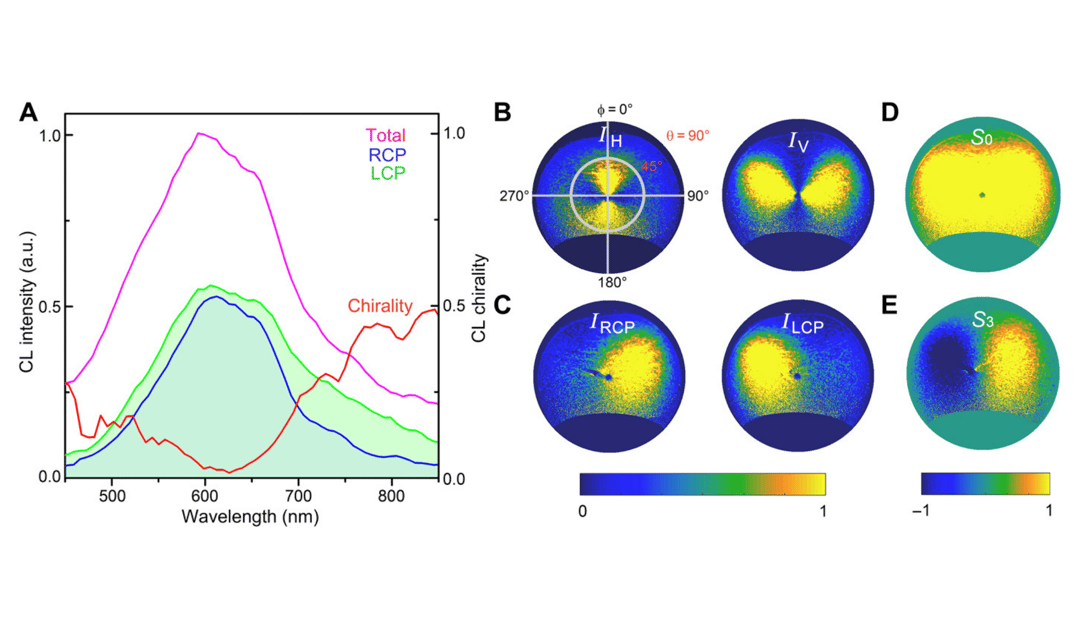A new paper entitled ‘Selectively steering photon spin angular momentum via electron-induced optical spin Hall effect’ was recently published in Science Advances by the researchers from Peking University, Beijing. The authors were experimentally investigating the manipulation of photon polarization (spin angular momentum) at a deep subwavelength scale via a novel electron-induced optical spin Hall effect (OSHE) in Au nanoantennas. Angle-resolved cathodoluminescence polarimetry was used to study these effects. The results of this study can contribute to future quantum applications, including quantum information processing and device design.
Applying quantum science to a practical technology has great potential for applications in computation, simulation, and cryptography. Finding a highly integrated information carrier with a large storage capacity is critical for such technology development. Photons have been validated as low-noise information carriers, and to provide extra degree of freedom for carrying quantum information, angular momentum was introduced. The optical spin Hall effect (OSHE) provides a unique approach for steering photon spin angular momentum. OSHE is showing a lot of potential in manipulating the information carrier for quantum technology.
The authors of the paper employ cathodoluminescence (CL) polarimetry as a noninvasive high-resolution detection method for electromagnetic field investigation at deep subwavelength scale. Angle-resolved CL imaging polarimetry was used to explore photon spin with far-field angular patterns and to observe the electron-induced OSHE at a deep subwavelength scale. The SPARC Spectral system was used to acquire CL angular patterns.
In the paper, the authors demonstrate a unique approach for selectively steering photon spin angular momentum at deep subwavelength scale via electron-induced OSHE. The results also show a spin-dependent binary encoding within a single unit, deep subwavelength scale steering, and large information capacity, which makes this approach a promising candidate for quantum information storage and processing.
To read the whole paper, please access it here.
Image source: Selectively steering photon spin angular momentum via electron-induced optical spin Hall effect C. Chi, Q. Jiang, Z. Liu, L. Zheng, M. Jiang, H. Zhang, F. Lin, B. Shen and Z. Fang, Sci. Adv, 7 (2021)
.png)






